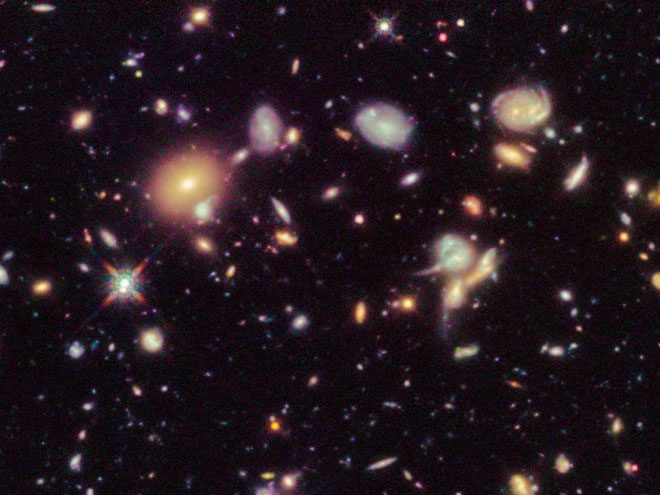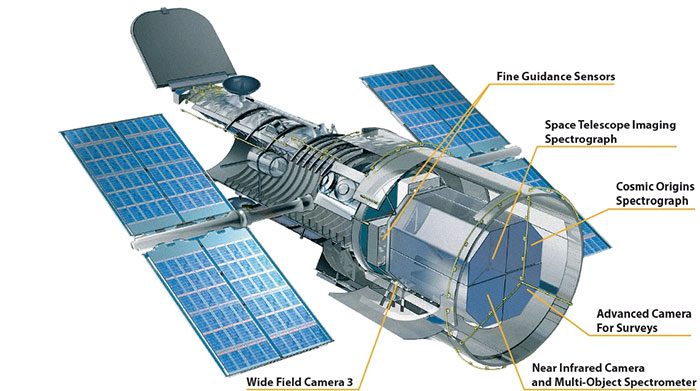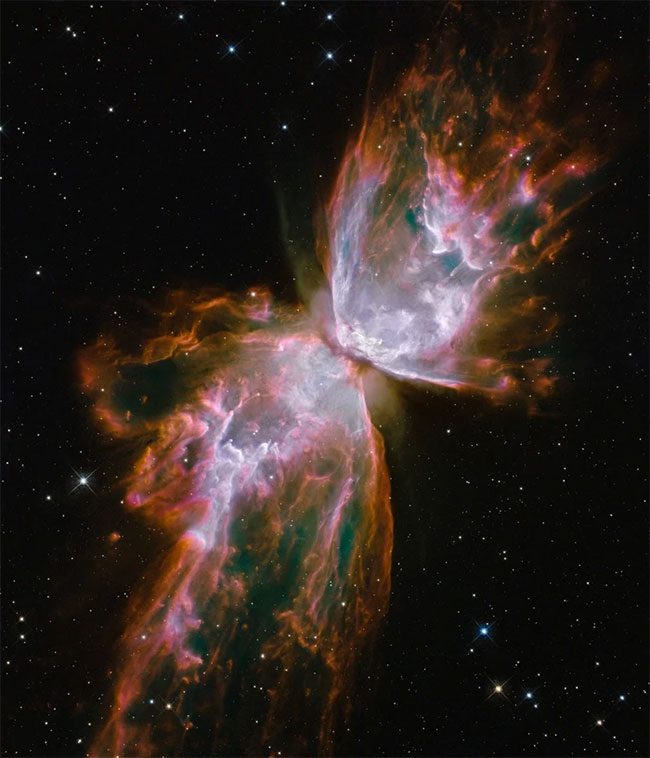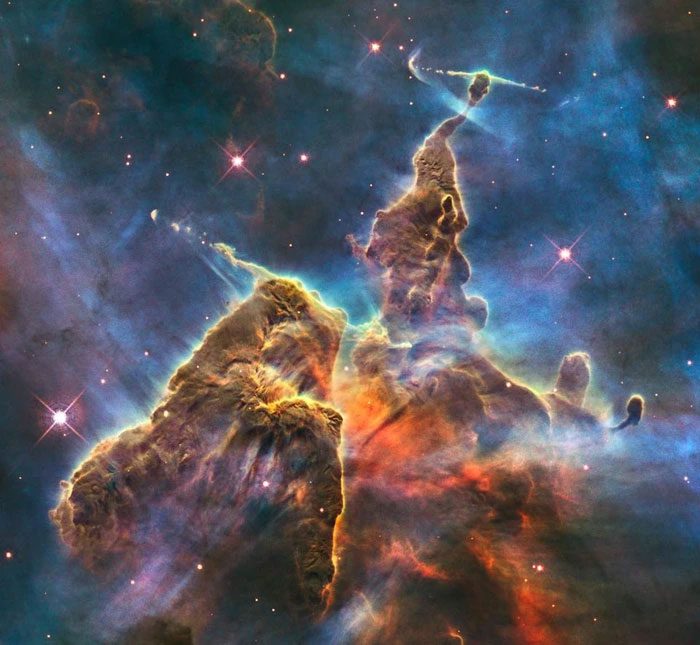The Hubble Space Telescope is incredibly powerful and has captured many stunning images of nebulae. However, even though Pluto is much closer than these nebulae, Hubble still cannot take clear pictures of this planet.
Since its launch over 30 years ago, the Hubble Space Telescope has captured countless breathtaking scenes from deep space for humanity, including galaxies located tens of millions and even billions of light-years away, which can be seen clearly through Hubble’s lens.

The Hubble Space Telescope was deployed into Earth’s orbit by the Space Shuttle Discovery over 30 years ago. Since then, Hubble has recorded spectacular images that are not only visually stunning but also provide invaluable scientific insights, revealing that the universe’s expansion rate is actually accelerating due to a mysterious force known as dark energy.
However, it is strange that the Hubble Telescope can capture images of galaxies billions of light-years away but cannot take clear pictures of exoplanets located just tens of light-years away, or even of Pluto within our Solar System.
Many might assume that the reason behind this is very complex and related to universal laws, but in reality, the answer is much simpler than you think. Hubble can capture images of distant galaxies but cannot photograph Pluto clearly because of differences in angular diameter (apparent diameter).
You might not be familiar with the term angular diameter, but it is used in astronomy to describe the size of the target celestial object. For example, the angular diameter of the Moon in our field of view is about 0.5 degrees.

This image is part of a project called “Hubble Legacy Field,” which constructs high-resolution images by pointing the Hubble Space Telescope at a specific point and then stitching them together to form a larger picture. These images will help scientists gain a deeper understanding of space and time.
However, when the Moon is 380,000 km away and has an angular diameter of 0.5 degrees, the Andromeda Galaxy, located 2.54 million light-years from Earth, has an angular diameter of 3 degrees, six times that of our natural satellite. It is very far away, but its diameter reaches 220,000 light-years, making it much easier for Hubble to photograph than the Moon. It can even use hundreds of exposures to ultimately compile a billion pixels of the Andromeda Galaxy image.
Meanwhile, the angular diameter of Pluto, located 4.8 billion km away, is only 0.11 arc seconds (1 degree equals 3600 arc seconds). Therefore, it is clear that Pluto appears too small in Hubble’s field of view.
Thus, it wasn’t until the New Horizons spacecraft flew past Pluto in 2015 that humanity obtained high-resolution images of Pluto.

The Hubble Space Telescope operates in orbit around Earth at an altitude of about 610 km, approximately 220 km higher than the orbit of the International Space Station (ISS). Traveling at a speed of about 7,500 m/s, Hubble can complete one orbit around Earth in 97 minutes and orbits the planet 15 times a day.

Known as the “Butterfly Nebula,” the planetary nebula NGC 6302 is formed from gas clouds heated to 20,000 degrees Celsius in the explosion of a star five times the size of the Sun. These gas clouds expand into space at a speed that tears through the cosmos—about 965,000 km/h. These gas clouds have been drifting through space for about 2,200 years, and the wings of the “giant butterfly” measure approximately 2 light-years across. NGC 6302 is located in the Milky Way, about 3,800 light-years from the constellation Scorpius. This image was captured by Hubble on July 27, 2009.

The image above, taken in April 2010, captures the peak of a chaotic mass of dust and gas clouds in space, towering up to 3 light-years high. This was chosen as the commemorative image for the 20th anniversary of Hubble’s launch into orbit around Earth. The faint light of this nebula is overshadowed by brighter surrounding stars, while young stars forming within it also emit beams of light penetrating outward. This gas and dust cloud is known as the Carina Nebula, located 7,500 light-years south of the Carina constellation.

The Horsehead Nebula was captured by the Hubble Telescope in April 2013. It resembles a seahorse and is also known as Barnard 33. In fact, the image above was taken using infrared light, a type of light with longer wavelengths than those visible to the human eye. Infrared light can penetrate dense cosmic dust, allowing Hubble to capture it.

In May 2013, from a distance of 2,000 light-years from Earth, Hubble captured an image of a nebula shaped like a ring, as its name implies – the Ring Nebula. The white spots you can see in the image are super-hot white dwarf stars. White dwarfs are one of the stages of stellar evolution in the universe; for instance, our Sun will evolve into a white dwarf in about 5 billion years. The Ring Nebula has a beautifully circular appearance, featuring a blue region in the center and a red halo surrounding it.

On April 21, 2016, marking the 26th birthday of the Hubble Space Telescope, NASA released stunning images of the Bubble Nebula that Hubble had captured. The Bubble Nebula is a massive star with a very high temperature, producing gas and dust that are blown into space by powerful winds.


















































